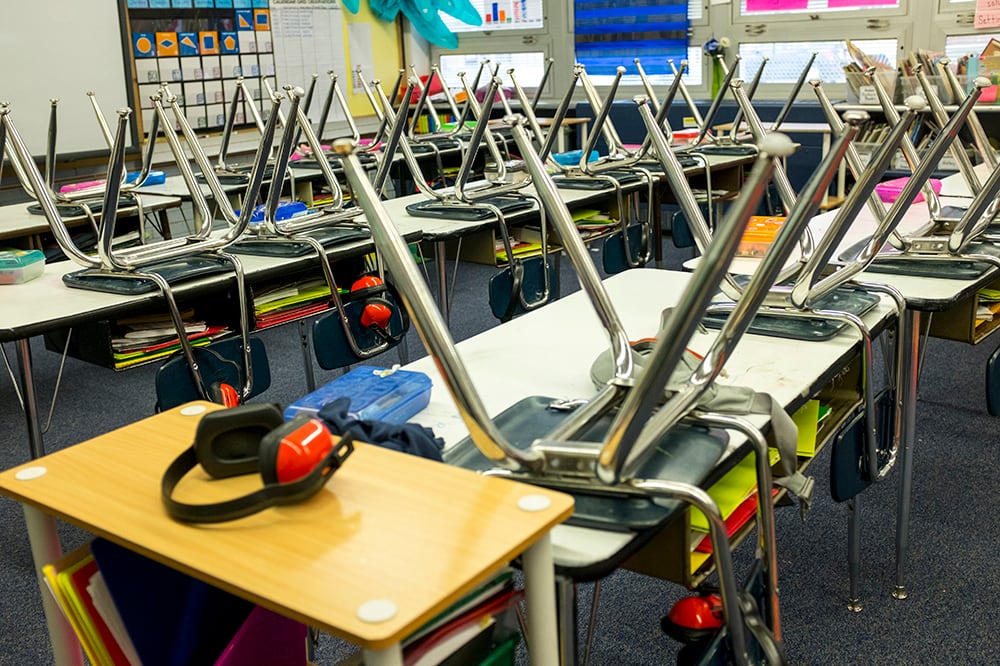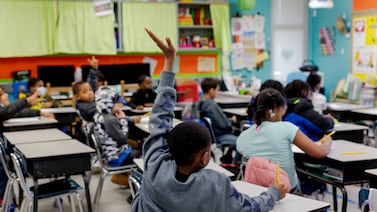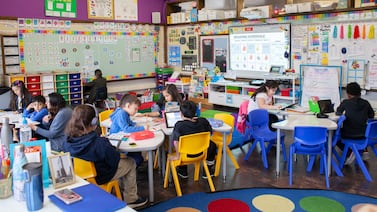Tennessee’s online database that is supposed to inform students and parents about the prevalence of COVID-19 cases on school campuses gives an incomplete picture because of privacy concerns and limited reporting by districts.
A Chalkbeat analysis of COVID-19 data in the state’s schools dashboard shows between 880 and 3,540 student coronavirus cases weren’t included in the district level totals from Oct. 19 to Nov. 15. Similarly, at least 685 and as many as 2,740 teacher cases also were excluded on the district level.
The wide range in the number of excluded cases in districts is caused because of how Tennessee shares data when there are fewer than five cases in a school. In Chalkbeat’s analysis, the lowest case estimates (listed above) presume there is one case in a school while the highest calculations presume there are four cases in the school.
The state “suppresses,” or excludes, data when there are fewer than five cases at a school. Data is shielded in small data counts because releasing that information could inadvertently lead to students or teachers being identified.
So if a school reports two COVID cases, for example, the state’s dashboard displays it simply as less than five cases for that school, but those same cases are excluded from the district totals in the dashboard. That means your school might report fewer than five cases, but the district level numbers would show zero.
That allows people to see what’s happening at an individual school, but it’s much more difficult to get a big picture of how many cases are cropping up in other districts around the state.
When Tennessee education officials rolled out the dashboard in September, it was touted as a way to provide up-to-date data about the spread of the coronavirus in schools. Parents could use the tool, officials said, to make informed decisions about whether to send their children back to school or keep them home learning virtually.
Officials at the Tennessee Department of Education argue that the dashboard is doing what it is supposed to do and defended excluding small COVID-19 case numbers in individual schools from district totals. “This is to further protect student privacy for districts with not very many schools where the identity of students’ would be easily verified,” department spokeswoman Victoria Robinson said in an email.
But the limitations of the dashboard are becoming increasingly evident. Earlier this month, the state’s largest teacher organization criticized the accuracy of the data and said it should be corrected or taken down.
“It is clear there are significant errors in the dashboard,” Tennessee Education Association President Beth Brown told Chalkbeat. “Gross underreporting is apparent when the student infection numbers are cross-referenced with concurrent Department of Health cases for school-age children.”
There are other issues with the dashboard.
The online portal, which updates on Mondays, shows two weeks of “real time” school-by-school COVID-19 data. But it doesn’t show cumulative totals over time, making it difficult to track trends over the course of the school year.
And although about 85% of districts have been submitting some information to the state since early September, the data they send is often incomplete and the reporting is inconsistent. Just 30% of the state’s 1,800 public schools are reporting COVID cases among students and staff, according to the Chalkbeat analysis.
Gov. Bill Lee has pointed to the dashboard in recent days as proof that coronavirus cases have been relatively low in school districts that have returned to in-person instruction.
At an Oct. 28 press conference, the governor cited statistics from the dashboard when asked whether he was concerned about the growing number of COVID-19 cases among students and the growing number of schools returning to virtual learning. He said although close to 700,000 students have been learning in person in Tennessee classrooms, the number of infected students has only been “in the hundreds.”
“We continue to be very encouraged by the low number of cases, relative to the number of students in the classroom,” he told reporters.
The governor also said that beginning in late September, Tennessee went three weeks without a school closure because of COVID-19.
He said “99.5% of our schools that have been in person remain open at any one time.
The numbers are actually very encouraging with regard to the ability to keep classrooms and school buildings open and to keep kids learning and to keep giving them access to much-needed resources.”
When Chalkbeat asked about the statistics cited by Lee, a Department of Education spokeswoman said that the percentage of schools that remain open is actually 99.95% rather than 99.5%. That information was sourced from the data available on the department’s dashboard, she said.
Chalkbeat could not confirm those statistics using the coronavirus database because of school districts’ inconsistent reporting of COVID-19 cases.
Chalkbeat reporter Marta W. Aldrich contributed to this report.






